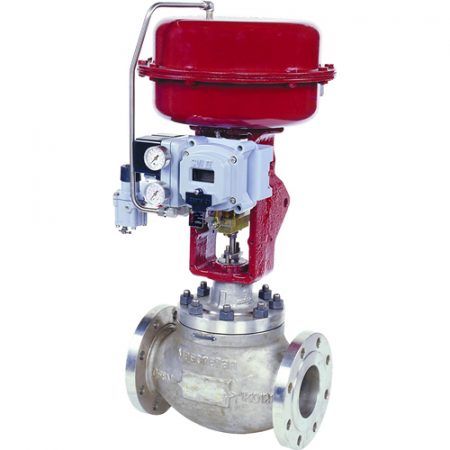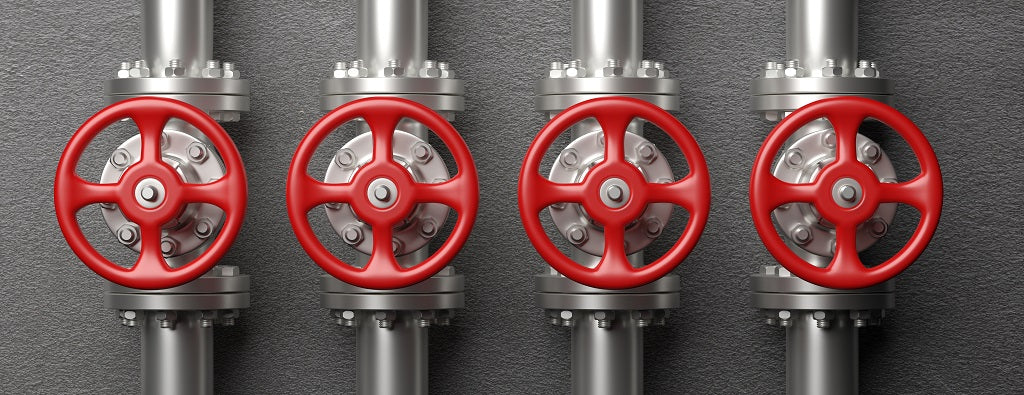Checking out the Capability of Modern Control Valves in Industrial Applications

Maximize Power Savings and Comfort With Advanced Structure Automation Controls
In the realm of modern design and facility management, the assimilation of sophisticated building automation regulates stands as an essential innovation. By using the power of automation, buildings can adjust, respond, and advance in methods that were once unimaginable.
Power Performance Advantages
Energy performance benefits can significantly reduce power intake and operational costs in structures. By carrying out energy-efficient techniques and innovations, structure owners and operators can accomplish substantial cost savings while also adding to environmental sustainability. One of the main benefits of improving energy efficiency in buildings is the reduction of utility expenses. Energy-efficient systems, such as sophisticated building automation controls, can enhance the use of resources like lighting, air conditioning, and home heating, leading to reduced power expenses in time.
In addition, boosted energy performance can lengthen the life-span of structure equipment and systems. By operating much more efficiently, heating and cooling systems, lighting fixture, and other structure elements experience much less wear and tear, resulting in minimized maintenance and replacement prices. Furthermore, energy-efficient buildings often regulate greater building values and rental prices, providing long-lasting financial benefits to proprietors.
Additionally, power effectiveness can boost resident convenience and productivity. Effectively managed indoor atmospheres with optimum lighting and thermal conditions develop a more positive and favorable work area, causing improved staff member fulfillment and performance. On the whole, the power effectiveness advantages connected with sophisticated structure automation controls are multifaceted, including expense financial savings, environmental stewardship, and resident wellness.
Improved Comfort Control
Enhancing convenience control in building settings needs a sophisticated assimilation of innovative automation systems for ideal passenger well-being. By utilizing innovative structure automation controls, centers can tailor the indoor environment to meet the details demands and preferences of residents. control valves.
By incorporating these sophisticated controls, structures can not just boost convenience but also enhance power performance by optimizing system operations based on actual occupancy and use patterns. Inevitably, prioritizing owner comfort with advanced automation systems leads to a more satisfying and much healthier indoor atmosphere.
Functional Performance Improvements
Moreover, the implementation of real-time tracking and analytics devices makes it possible for structure operators to determine energy click over here ineffectiveness and functional anomalies quickly. By constantly keeping track of energy usage patterns and system efficiency metrics, modifications can be made in real-time to enhance power usage and make sure peak operational effectiveness. control valves. Furthermore, including need reaction strategies right into structure automation controls can even more enhance functional performance by dynamically changing energy usage based on grid problems and prices signals
Indoor Climate Optimization
Efficient interior environment optimization is a basic aspect of building automation controls, making certain occupants' comfort and health while making best use of energy cost savings. By making use of sophisticated sensing units and controls, constructing automation systems can continuously keep an eye on and readjust temperature, moisture degrees, air high quality, and air flow to produce an optimal indoor setting. Maintaining regular and comfortable problems not just boosts occupant fulfillment but also boosts productivity and overall well-being.
Indoor climate optimization also plays an important function in energy effectiveness. By fine-tuning home heating, air conditioning, and air flow systems based on real-time information and tenancy patterns, developing automation controls can substantially decrease energy intake - control valves. Carrying out techniques such as demand-controlled ventilation and thermal zoning can help lessen power waste while making sure that each location of the structure gets the required conditioning.

Sustainable Setting Development
Building automation controls not only maximize indoor environment conditions for power effectiveness and passenger comfort but likewise lay the foundation for developing a lasting setting with critical management of systems and resources. this contact form By integrating advanced building automation modern technologies, such as sensing units, actuators, and intelligent software, facilities can change and monitor power use in real-time to reduce waste and lower their carbon impact. These systems enable anticipating upkeep, identifying prospective issues before they rise and optimizing equipment performance to boost longevity and performance.
Furthermore, sustainable setting creation prolongs past energy administration to incorporate water conservation, waste decrease, and indoor air top quality improvement. Building automation controls can control water usage, discover leaks, and make certain appropriate waste disposal methods, contributing to total sustainability initiatives. Furthermore, by managing and checking ventilation and filtration systems, these modern technologies boost occupant health and productivity while reducing energy consumption connected with cooling and heating procedures.
Verdict
Finally, progressed building automation regulates deal significant advantages in terms of power cost savings, convenience control, functional performance, indoor climate optimization, and developing a sustainable setting. By carrying out these controls, structures can attain ideal performance while reducing energy usage and enhancing passenger comfort. It is obvious that using sophisticated automation modern technology is essential in boosting structure efficiency and creating an extra sustainable future.
Energy efficiency advantages can substantially decrease power usage and functional expenses in structures. In general, the energy performance benefits linked with sophisticated building automation controls are diverse, encompassing price savings, ecological stewardship, and passenger well-being.
Additionally, including demand response approaches into structure automation controls can further improve operational performance by dynamically adjusting energy use based on grid problems and prices signals.
Structure automation manages not just browse around this web-site optimize indoor environment conditions for energy performance and resident convenience yet likewise lay the structure for producing a lasting environment via calculated monitoring of sources and systems.In final thought, advanced building automation controls offer substantial advantages in terms of energy cost savings, convenience control, functional efficiency, indoor climate optimization, and creating a sustainable atmosphere.